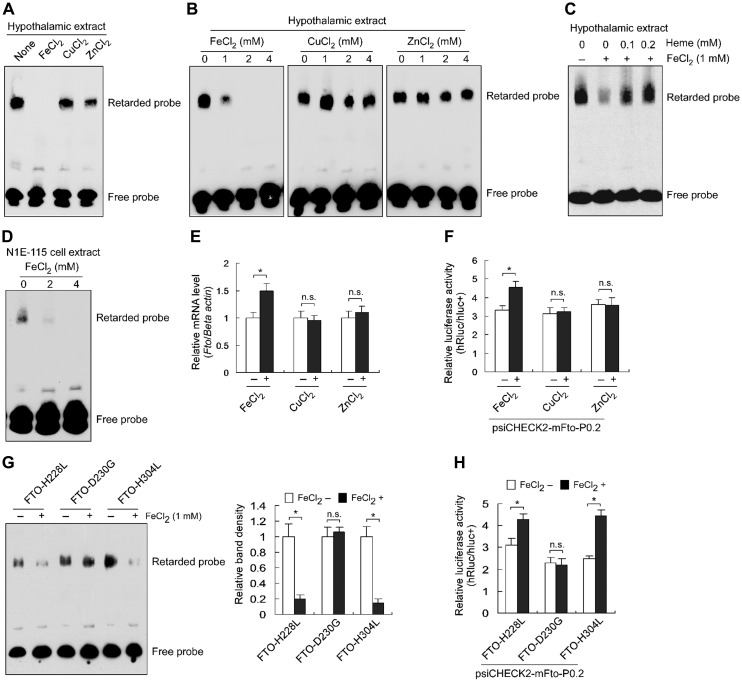Figure 4.
FTO is a Fe2+-sensitive transcriptional repressor. (A) EMSA showing a repressive effect of Fe2+, instead of Cu2+ or Zn2+, on FTO binding to the promoter sequence. (B) EMSA showing a decreasing binding ability of FTO to the core promoter in response to the increasing Fe2+, instead of Cu2+ or Zn2+. (C) The repressive effect of Fe2+ on FTO binding to the probe was deprived by Fe2+-free heme. (D) EMSA showing a decreasing binding ability of FTO to the core promoter in response to the increasing Fe2+ with the nuclear extracts of N1E-115 cells. (E) Fe2+ increased Fto mRNA levels in N1E-115 cells. The Fto mRNA levels were normalized to the β-actin level and compared to the relative mRNA levels in cells without ion treatment (as ‘1’). n = 3, *P < 0.01. n.s. represents no significant. (F) Fe2+ increased Fto promoter activity in N1E-115 cells. n = 3, *P < 0.01. n.s. represents no significant. (G) The FTO binding to the promoter in response to Fe2+ was abolished by the mutant FTO-D230G, but not FTO-H228L or FTO-H304L. The image is representative of three experiments. The average shift band density of the reaction without FeCl2 was set as ‘1.’ n = 3, *P < 0.001. n.s. indicates no significance. (H) The repressive effect of FTO on its own promoter in response to Fe2+ was abolished by the mutant FTO-D230G, but not FTO-H228L or FTO-H304L. n = 10, *P < 0.001. n.s. indicates no significance.

